Content
Strawberry Cabrillo is an American variety. It has a record yield - up to 3.7 kg per bush. In temperate climates, you can remove 1.5–2 kg per plant. Requires regular watering, fertilizing and other care measures.
History of selection
Cabrillo strawberries were bred by breeders at the University of California, USA. The authors are renowned scientists Kirk D. Larson and Douglas W. Shaw. This variety is considered the most productive in the remontant category.
Work on the Cabrillo variety began in 2008. It was based on 2 lines designated in the nomenclature Cal 5.206-5 and Cal 3.149-8. Already in the following year, 2009, the new variety Cabrillo began to undergo field trials.
Scientists have repeatedly propagated the bushes in different ways to make sure that high yields and other valuable qualities are preserved in the offspring. In 2010Large-scale studies have been conducted on several groups of Cabrillo strawberries to study various indicators. And already in 2016, the variety underwent the official registration procedure and received a patent (the copyright holder is the University of California). The document notes that this is one of the best varieties of remontant strawberries with a record yield of up to 3 kg per plant.
In the very first years, the culture spread to different countries of the world, and it also appeared in Russia. The variety has not yet been included in the register of breeding achievements of the Russian Federation. However, many summer residents have already managed to get their first harvests and even wrote reviews about this crop.
Description and characteristics of the remontant strawberry variety Cabrillo
In appearance, the bushes of this strawberry resemble fairly well-known representatives - San Andreas and Albion. But Cabrillo has more leaves, and the shoots are almost straight. The leaf plates are smaller in size, they have a concave shape, and are quite dense to the touch. The color is bright green, with a glossy “bold” sheen. The edges are pointed and there are teeth.
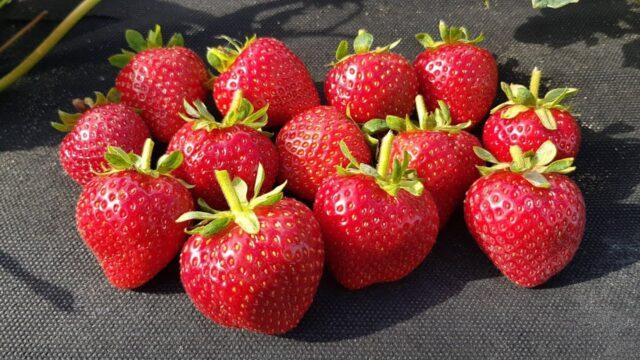
Ripe Cabrillo strawberries have an attractive presentation
The flowers of the variety are small in size, typically white in color, and bisexual (the plant is monoecious, i.e., each bush has male and female inflorescences). The flower stalks are quite tall, powerful, rise above the plant, and bend to the ground during fruiting.
Characteristics of fruits, taste
Cabrillo strawberries produce very beautiful berries that look more attractive compared to the San Andreas and Albion varieties. The shape is symmetrical, conical, slightly flattened (widened on the sides). The color is classic bright red. The achenes are yellow, buried shallowly. The surface has a pleasant gloss and shines in the sun.The sizes are medium and large, the weight is about 30 g. The berries are homogeneous, approximately the same in weight.
The pulp is juicy, moderately dense, but not hard, has a pleasant consistency, and does not crunch on the tongue. The berries are very aromatic and have excellent taste. The pronounced sweetness and harmonious tones of classic strawberries with delicate sourness are noticeable. The taste of Cabrillo strawberries is multifaceted, according to many gardeners, richer than that of Albion or San Andreas.
Berries should be picked and tasted after they are fully ripe. The taste of unripe berries will be mediocre.
Ripening time, yield and keeping quality
Strawberry Cabrillo belongs to the mid-early remontant varieties. Flowering occurs in the second half of May - early June, the first fruits are harvested in July. The variety is remontant, fruiting is extended and stable, lasting throughout the summer (until August inclusive). In the south, the harvest is harvested until September.
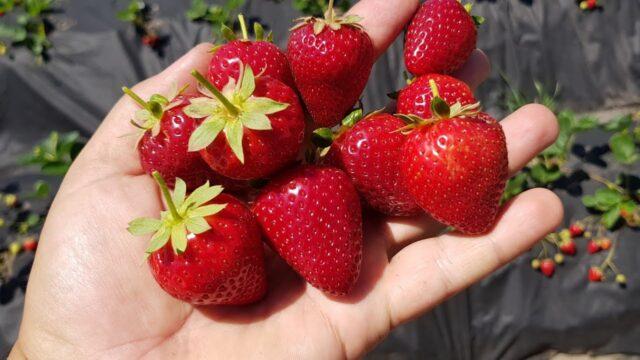
The first Cabrillo strawberries ripen in early July
The description of the Cabril strawberry variety states that the maximum yield reaches 3–3.7 kg, which is a record figure compared to the vast majority of other varieties. In temperate climates you can get 1.5–2 kg. If you grow it in a greenhouse and carefully care for it, you can harvest up to 2.5–3 kg per bush (provided that the summer and early autumn are warm).
The skin of the fruit and the consistency are quite dense. Therefore, they keep well in the refrigerator or in a cool, dark room. Transportability is also normal.The harvest can be transported over long distances, especially if it is collected at the stage of technical ripeness.
Growing regions, frost resistance
The variety has only recently been grown in Russia, so there is no reliable information about winter hardiness. It is recommended to cultivate the crop in open ground and in greenhouses, especially in regions with short summers (Siberia, Far East). For the winter, a mandatory shelter is required, preferably reinforced (frame with agrofibre and mulch).
Resistance to diseases and pests
The description states that Cabrillo strawberries have good resistance to common pests and diseases. But you should not neglect preventive treatments (especially since there is evidence that the variety is vulnerable to late blight). In the spring, before flowering begins (April), it is recommended to spray the bushes with fungicides:
- Bordeaux mixture;
- "Teldur";
- "Fitosporin";
- "Horus";
- "Signum".
A similar treatment can be carried out in the fall, after harvesting the last harvest. It is also recommended to remove all fallen leaves and burn them, as pests can overwinter in them. Cabrillo strawberry bushes are sprayed with folk remedies against aphids, weevils, strawberry mites and other insects:
- infusion of garlic cloves, mustard powder;
- a solution of tobacco dust, wood ash and soap;
- decoction of marigold flowers.
If these measures do not help, insecticides are used - “Aktara”, “Inta-Vir”, “Decis”, “Vertimek”, “Fitoverm” and others.
Advantages and disadvantages of the variety
The Cabrillo variety has advantages, the main one of which is high yield. Even if you remove 1.5 kg from a bush (the minimum value), this is a very good result compared to many other varieties.
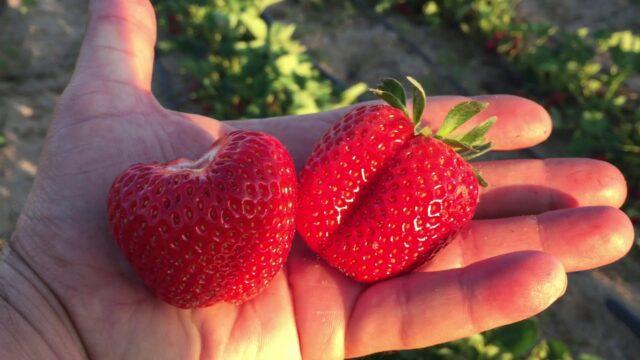
Cabrillo strawberries are suitable for commercial cultivation
Pros:
- very high yield up to 3.7 kg;
- berries are medium and large, with excellent taste and attractive appearance;
- good transportability, keeping quality;
- resistance to most diseases.
Minuses:
- demanding care;
- no data on winter hardiness;
- may not take root in some regions;
- Cabrillo strawberries are vulnerable to late blight.
Reproduction methods
Cabrillo strawberries can be propagated in two ways:
- mustache;
- dividing the bush.
In the first case, the shoots are separated at the beginning of summer and planted in fertile soil to a depth of 4 cm, monitoring watering. For division, adult Cabrillo strawberry bushes at the age of four years are used. They are dug up in August, placed in water and separated by hand or with a knife. They are planted in fertile soil, and in October or early November they are carefully covered for the winter.
Planting and care
Cabrillo strawberries can be grown in a greenhouse and in open beds. The variety is demanding on the composition and structure of the soil. The best option is fertile, loose loam with a slightly acidic reaction (pH about 6). The requirements for the location are standard - no shade, dryness (no stagnant moisture in lowlands), protection from strong drafts, good air circulation.
Even if the soil is fertile, it needs to be prepared. Most often, Cabrillo strawberry planting is planned for May, and digging is planned for October. The place needs to be cleaned and a bucket of compost or humus added, as well as 200–300 g of wood ash per square meter.If the soil is heavy and contains a lot of clay, add 500–800 g of sawdust or sand to it for the same area.
Standard landing pattern:
- Cabrillo strawberries are best placed on the southern slopes of the garden;
- the beds are oriented in the north-south direction;
- bushes are placed in a checkerboard pattern;
- an interval of 30 cm is left between the holes;
- The rows should be spaced 60 cm apart.
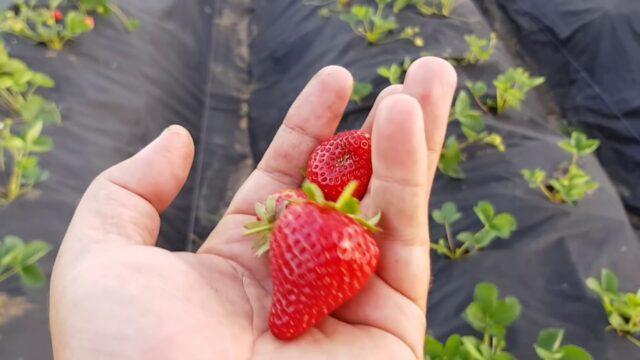
Cabrillo strawberries can be grown under agrofibre
Care of the crop is especially careful. Watering is planned at least once a week, and in drought - twice. Use only distilled water. Fertilizer for Cabrillo strawberries is applied four times per season (the amount is indicated for processing 1 m2 landings):
- April – urea (15–20 g);
- beginning of flowering - potassium nitrate (10 g);
- first half of July – mullein (1:10), superphosphate (50 g), potassium salt (40 g);
- after harvesting - wood ash (250 g).
It is advisable to mulch Cabrillo strawberry plantings with straw or agrofibre. This will prevent the appearance of weeds and make maintenance much easier.
Preparing for winter
To achieve high yields of Cabrillo strawberries, as in the description of the variety, and to obtain large berries, as in the photo, gardeners in reviews recommend carefully covering the bushes for the winter. After the first frost (slightly below 0), it is necessary to mulch the plantings with a high layer of straw, spruce branches, and sawdust. It is recommended to install a frame and stretch agrofibre.
Conclusion
Cabrillo strawberries are quite demanding in terms of care and ambient temperature. But it produces a lot of berries, which appear throughout the season. The fruits are quite large and attractive in appearance. They have a rich taste and pleasant aroma.You can learn about the basic rules for growing Cabrillo strawberries in the Russian climate from the video.
Reviews from gardeners about remontant strawberries of the Cabrillo variety
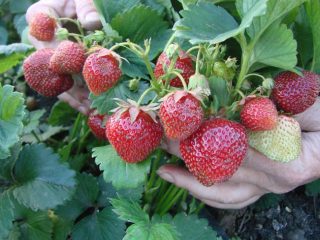

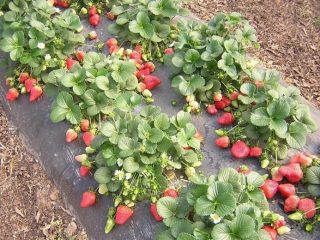
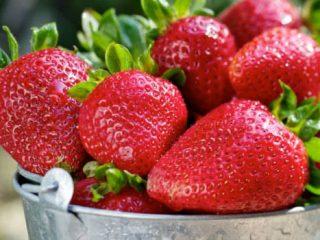
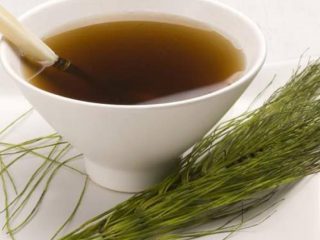

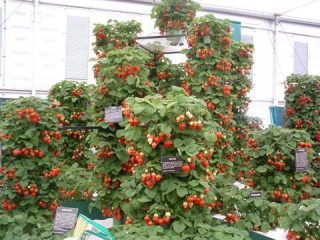
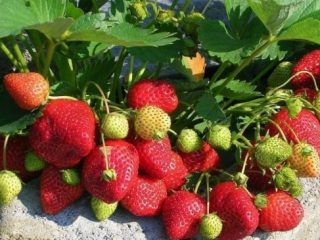
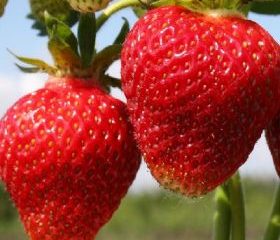
The main drawback is that you have to wait for full ripening when it is already red, and you already want to tear the red one, but it has no taste at all - sour. Now I know what they sell in early spring on the market. I will remove it and replace it with Murano.
Thanks for your feedback. I read it and decided not to grow this variety. Sincerely. Stanislav.